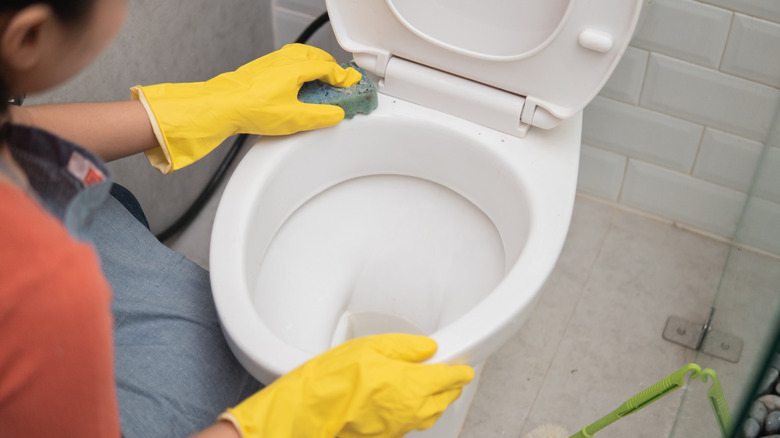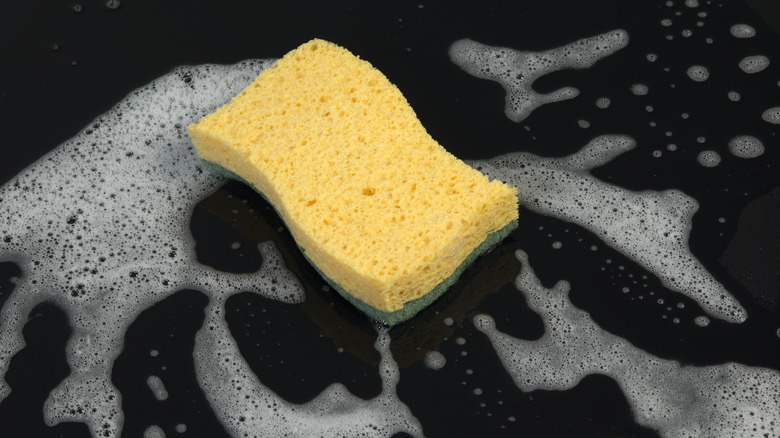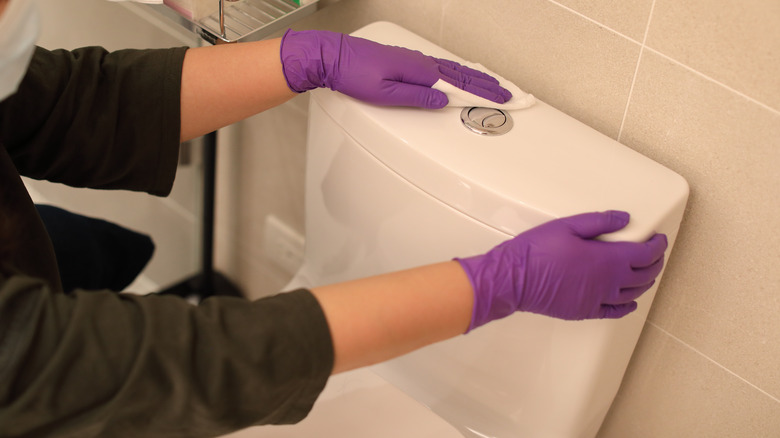Here's Why Cleaning Your Toilet With A Sponge Is Even Grosser Than You Think
Sponges are a traditional cleaning utensil for good reason. They clean surfaces well, they can be squeezed and dried easily, and they are cost-effective to boot. However, they aren't the most sanitary option. For that reason, some people don't use sponges to clean dishes and surfaces, though many still do. Believe it or not, sponges are also often used to clean toilets. However, this practice is gross — even grosser than you may think.
Despite popular belief, toilets aren't necessarily the germiest place in your bathroom – or even your whole home, for that matter. Studies have shown that kitchen sponges can harbor significantly more bacteria than toilet bowls. This is because sponges were created to absorb, and that includes all of the bad stuff. They contain countless tiny holes that trap moisture along with food and grime particles. This creates the ideal conditions for bacteria to thrive and multiply.
Sponges can cross-contaminate
Though you may never intend to use a sponge that cleans the toilet to clean any other part of your home, keeping that sponge isn't exactly a good idea, either. Even if the plan is to set the sponge aside for toilet cleaning only, there is a risk of contamination. Sponges are notorious for cross-contamination. A sponge soaked with toilet water will have microscopic remnants that are still clinging to the sponge due to its porosity.
Once dirty, any surfaces that the sponge comes into contact with can be infected with the lingering germs from the toilet. This, of course, can pose a significant health risk, and the transferred germs have the potential to cause illness. The trapped bacteria, which may include E. coli and salmonella, can lead to gastrointestinal illnesses and viruses that cause diarrhea, vomiting, and cramps. A better way to clean the toilet is to use cleaning tools that you can immediately discard after use.
Better ways to clean the toilet
There are several effective alternatives to the sponge that are safe and easy to use. Your best bet is to use disposable disinfecting wipes, which are both convenient and sanitary. When using disposable wipes, use one for the toilet seat, one for the outside of the bowl, and one for the tank. Throw each one out immediately upon use. Certain wipes are specifically formulated for toilet cleaning to ensure they are effective against bacteria.
Another option is to use a toilet brush with replaceable heads. After cleaning the toilet, simply detach the head and dispose of it. As opposed to traditional toilet brushes that come with a holder, replaceable heads ensure that you're not reusing a germ-ridden brush the next time you clean. Additionally, liquid toilet bowl cleaners and sprays are created to tackle toilet bowl grime and disinfect at the same time. Pour or spray the cleaner into the bowl, let it sit for the recommended time, and then scrub with a toilet brush, ideally one that has a replaceable head. If you use a traditional one, the easiest way to clean your toilet brush is actually in the toilet with bleach.


